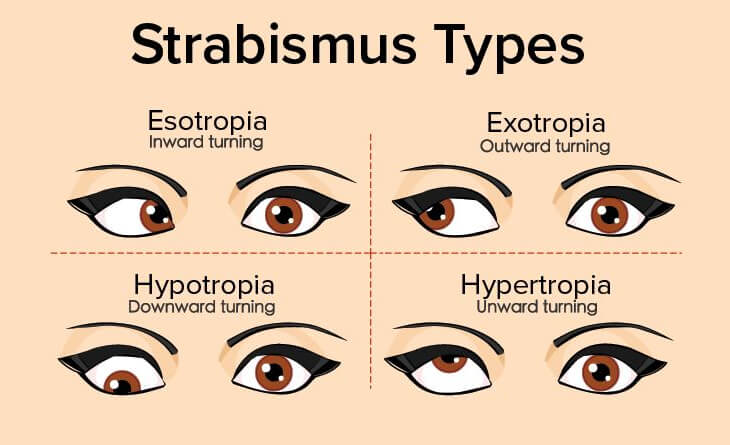What Are The Different Types of Squints?
A squint, or strabismus, is a visual condition in which the eyes are not aligned properly. In a person with a squint, the two eyes do not point in the same direction simultaneously. One eye may look straight ahead, while the other may turn inward, outward, upward, or downward. This misalignment can be constant or intermittent, affecting one or both eyes.
Several treatment options are available, including squint eye surgery, and understanding the types can help you and your doctor with an appropriate treatment approach.
Types of Squint
There are two major types of squint:
Inward (Esotropia): Esotropia is the most common type of squint, where one eye turns inwards towards the nose. Several factors, including muscle weakness or muscle imbalance, can cause it.
Outward (Exotropia): Exotropia is the second most common type of squint where one eye turns outwards away from the nose. It is also caused by muscle weakness and muscle imbalance.
Another common type of squint is vertical squint. Vertical squints are less common than esotropia and exotropia. In a vertical squint, one eye turns upwards or downwards. If one eye is positioned higher than the other, it is called hypertropia. Whereas if one eye is positioned lower than the other, it is called hypotropia.

Further Classification of Squint
Squints can be categorized further beyond the major categories depending on various factors. Dr. Anisha Gupta, an eye specialist in Delhi, can help you prevent vision loss by diagnosing the type and cause of your squint.
Constant Squints: In constant squints, the eyes are always misaligned, whether the person is focused on an item or not.
Intermittent squints : In intermittent squints, squinting is visible on and off and the eyes may appear perfectly aligned at most times.
Other terminology used to classify squints
Childhood Squints: Childhood squints develop due to various factors such as muscle weakness, muscle alignment issues, or refractive errors.
Paralytic squint: Nerve paralysis squints or paralytic squints occur when there is a dysfunction in the nerves controlling eye movement. This can lead to an inability to control the eye’s position effectively. These are seen in diabetics, high blood pressure and certain tumours of the brain and orbits.
Sensory squint: A sensory squint is caused when one eye is seeing significantly less than the other. The non-seeing eye can go inward (esotropia) or outward (exotropia).
Disease-related squint: Certain diseases or medical conditions, like Down syndrome or cerebral palsy, can result in squints.
Muscle Weakness Squints: Muscle weakness squints occur when the muscles responsible for eye movement are not functioning properly. This can lead to misalignment of the eyes. Muscle exercises help in such squints.
Refractive Error-Related Squints: Sometimes refractive errors, such as astigmatism or nearsightedness, or far sightedness can also contribute to the development of squints. These get corrected after wearing glasses.
Treatment for Squint
The treatment options may include:
- Eyeglasses
- Eye Exercises
- Vision Therapy
- Squint Surgery
If you notice any squint in your child, consult the eye doctor immediately. The doctor will evaluate the eye condition and recommend the treatment option based on the type of squint and the severity of the situation. He/She will also explain the squint surgery procedure and the squint eye surgery cost in Delhi if required.
Squints are a complex visual condition with various types and underlying causes. Recognizing the different types of squints is essential for diagnosis and accurate treatment. If you are looking for squint surgery in Delhi, book your consultation with Dr Anisha Gupta.





